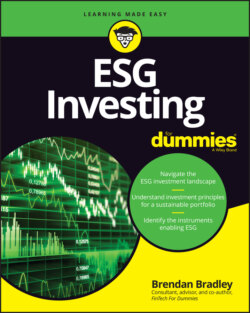Читать книгу ESG Investing For Dummies - Brendan Bradley - Страница 33
The 20th century
ОглавлениеThe genesis of responsible investing was to promote the allocation of capital to firms that “did no harm.” This developed into investing in companies that didn’t profit from war or regimes with poor human rights records, until the focus on ESG principles that we know today emerged later in the century:
1900s and before: Socially responsible investing (SRI) originated among religious groups over 100 years ago. Methodists and Quakers established faith-based investing guidelines for their followers, and other religious orders soon adopted similar investing guidelines for their brethren.
1930s: The Great Depression produced numerous corporate scandals, so investors turned their attention to governance issues. Consequently, the ‘S’ in SRI was no longer the major focus, and a broader view of responsible investing was born.
1960s: The rise of civil rights and anti-war demonstrations prompted investors to consider shareholder advocacy (to have their voices heard on issues that were important to them) when influencing corporate behavior. For example, Vietnam War protestors urged university endowment funds to exclude defense contractors in their investment policies.
1980s: The Chernobyl nuclear power plant accident, Bhopal gas leak, and Exxon Valdez oil spill raised further concerns about corporate responsibility, and the related threats of climate change and ozone depletion.
1987: The Brundtland Commission (Our Common Future) report recognized that human resource development in the form of poverty reduction, gender equity, and wealth redistribution was crucial to formulating strategies for environmental conservation. It introduced the most widely accepted definition of “sustainable development” — that is, “development which meets the needs of current generations without compromising the ability of future generations to meet their own needs.”
1992: The United Nations’ Earth Summit, which took place in Rio de Janeiro, marked the largest environmental conference ever held, with 172 governments in attendance. The Summit’s message — “nothing less than a transformation of our attitudes and behavior would bring about the necessary changes to preserve the planet” — was transmitted around the world. Also, the United Nations Framework Convention on Climate Change (UNFCCC) and the UN Convention on Biodiversity were both signed.
1993: Investors began to exert pressure on fund managers to avoid investing in South African companies due to that country’s apartheid policy.
1997: The Global Reporting Initiative (GRI; see Chapters 1 and 15) was founded, with the aim to create the first accountability mechanism ensuring that companies adhere to responsible environmental conduct principles. This was later broadened to include social, economic, and governance issues.
